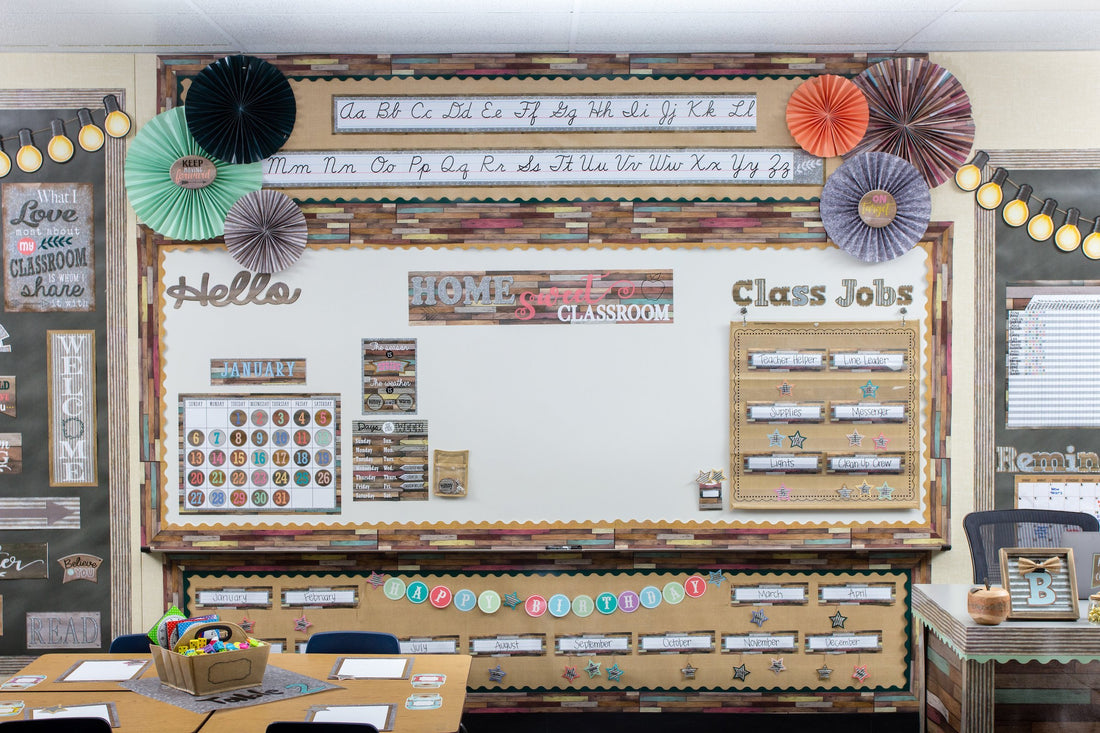Why Classroom Theme Matters
Put yourself in your student’s shoes for a moment. You walk into your new third-grade classroom, eyes aglow at the multitude of colors, patterns, and themes that are clamoring for your attention. They’re so bright and powerful that they distract you from the teacher. They’re dizzying and overwhelming, making it hard to know where to give your focus.
From the teacher’s perspective, you might be feeling impressed with yourself. You’ve painstakingly created a stunning visual design and probably had fun in the process.
But as a student, too many themes, colors, and elements creates chaos and confusion. For students with ADHD or other disabilities, it magnifies these effects. The more you add to the room, the more you set up your students for a distracting, noisy learning experience.
However, when you can integrate a classroom theme that minimizes distractions, your students can feel inspired. They’ll appreciate the effort you put into making their class fun and inviting and may even look forward to coming to school every day.
4 Tips for Choosing an Effective Classroom Theme
When done correctly, a strong classroom theme can add value to every moment your students spend there. Before you go crazy on art supplies, consider the following tips for choosing an effective classroom theme that will help your students excel:
1. Less is More
It’s not about having the most themes - it’s more about having the right theme. Stick with one idea at a time and be consistent throughout your classroom. Simple themes look less busy, which can help students feel less overwhelmed when they step inside your classroom.
2. Change Your Theme Often
Over time, your theme becomes an expectation. It blends into the students’ daily lives and they don’t give much thought to it. To keep your classroom fresh and exciting, consider changing your theme with the seasons or holidays so students always have something new to look forward to.
3. Leave Room for Student Contribution
Your theme should set the stage for classroom success, not complete the entire story. If you’re crowding your walls, ceiling, and windows with decor, there’s no room for students to contribute their own work.
Make sure you dedicate enough space for artwork, projects, and other displays that help students feel at home in your class. Every time they look at their work, they’ll love knowing it’s something they added to the classroom ambiance.
Get inspired this upcoming school year at Class Border - check out our newest classroom themes that will make your students excited to learn!

